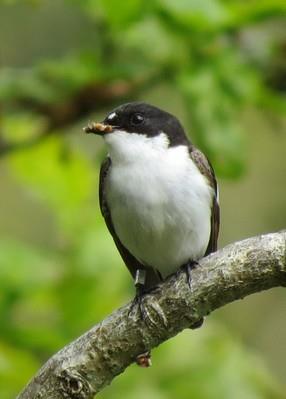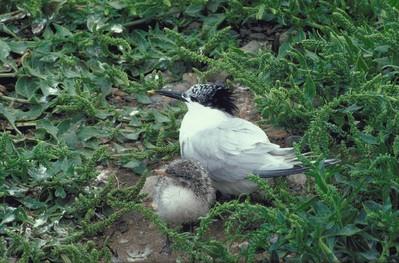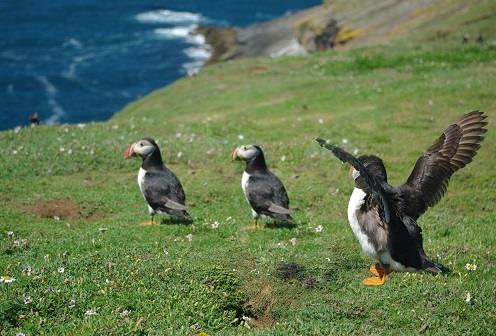Introduction
Wales’ varied habitats support many of the common birds found in Britain. Redstarts and pied flycatchers are typical birds of Welsh oak woodland and breeding chough can be found around the Welsh coastline in areas of short coastal grassland and rocky cliffs. The red kite is a Welsh success story and, like the common buzzard has spread east to other parts of Britain. The seabird colonies of Wales are important nationally and internationally. The seabird colonies of Skomer, Skokholm, Bardsey and Grassholm collectively support puffins, guillemots, razorbills, gannets and approximately 165,000 breeding pairs of Manx shearwater- the largest breeding population in the world.
Greenland white-fronted geese overwinter in small numbers in the Dyfi Estuary from October - the RSPB's Ynys Hir reserve is a good place to see them. Both the Dyfi Estuary and Glaslyn estuaries support breeding ospreys. Public viewing facilities are available at both sites, the former at the Montgomeryshire Wildlife Trust Cors Dyfi.
Some of our farmland birds are in decline in Wales, mirroring declines in the rest of Britain. For example, the twite is now found only in the Nant Ffrancon and Ogwen valleys of northern Snowdonia, with around 16 pairs which disperse to the coast in winter. Similar declines in both numbers and range have also been seen in many of our other farmland species such as tree sparrow, yellowhammer and starling.
Birds of Conservation Concern Wales 4
Read the report here
Bird Conservation in Wales
51 species of birds are listed on the priority species list for Wales (section 7 list). Voluntary sector organisations work with Welsh Government and statutory agencies, such as Natural Resources Wales, to further bird conservation in Wales. Agri-environment schemes have the potential to deliver for bird species including grey partridge, yellowhammer, linnet and tree sparrow. Voluntary sector organisations involved with Welsh bird conservation include the British Trust for Ornithology (BTO), RSPB, Welsh Wildlife Trusts, National Trust, Wildfowl & Wetland Trust, Game & Wildlife Conservation Trust and the Welsh Ornithological Society. An example of this partnership approach is the Wales Bird Conservation Forum which is a voluntary group that draws together expertise from NRW and voluntary sector partners to further bird conservation in Wales.
BTO Breeding Bird Survey Reports
In Wales, with the additions to the reporting for Siskin and Reed Bunting, the total number of population trends of birds is up to 56 in the 2016 report. Of these, 28 show statistically significant changes in the long term. For further details, see the Welsh section in the report.
Pied flycatchers have declined by 48% in the UK and now appear on the Red list of birds of Conservation Concern
Pied flycatcher © NRW

















